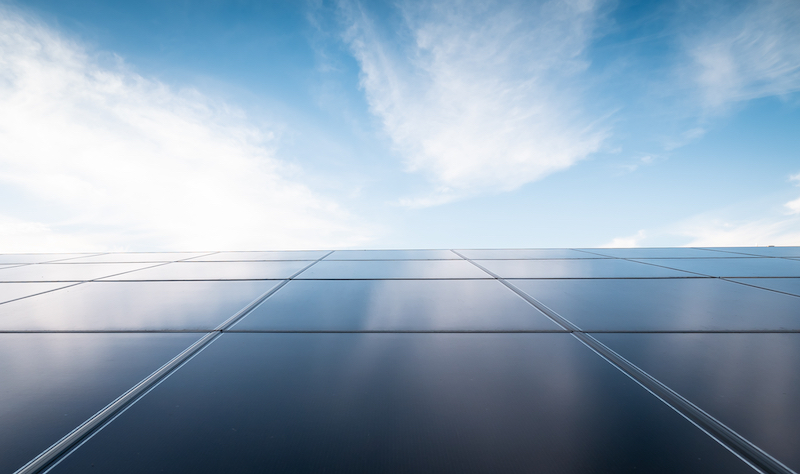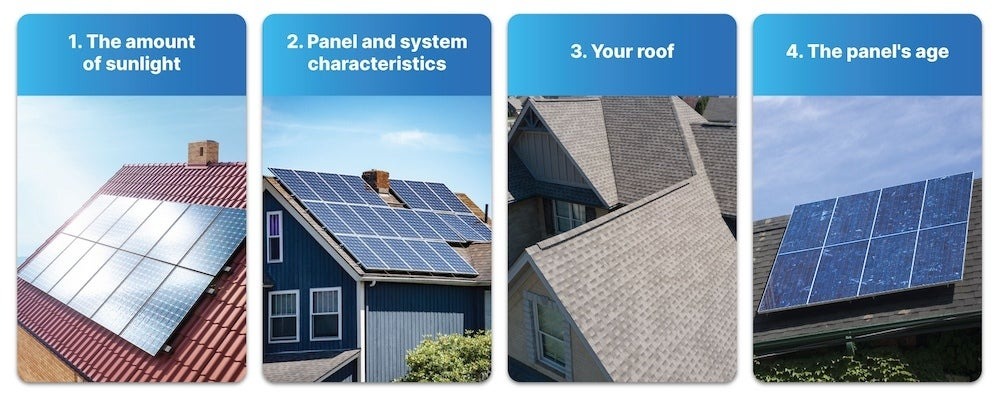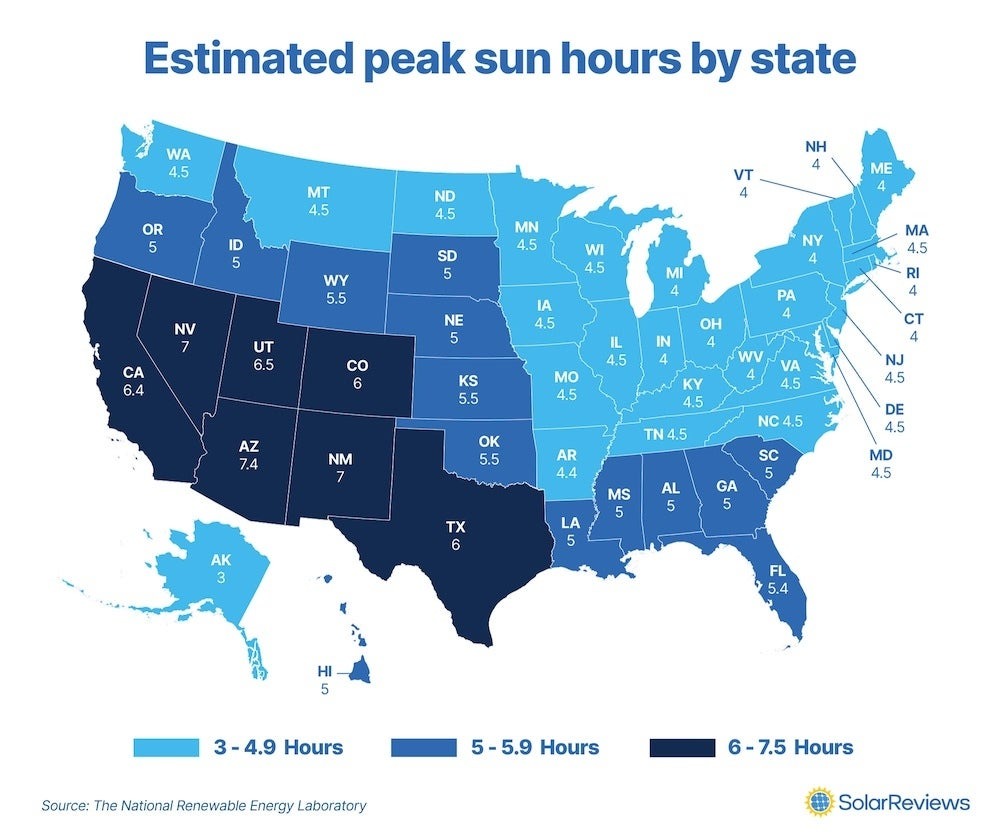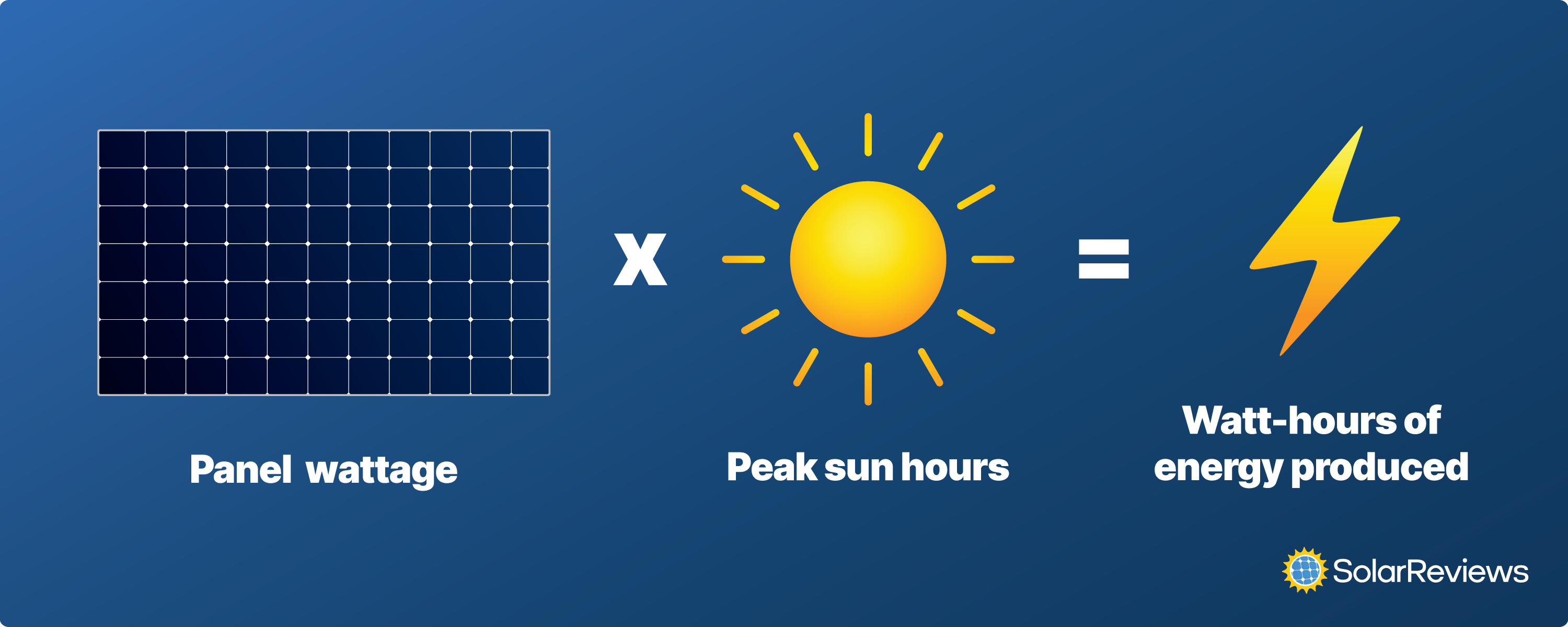Updated 8 months ago
How much energy does a solar panel produce?
Written by
Ben Zientara

Find out how much energy solar panels can produce on your roof
On average, a solar panel can output about 400 watts of power under direct sunlight, and produce about 2 kilowatt-hours (kWh) of energy per day.
Most homes install around 18 solar panels, producing an average of 36 kWh of solar energy daily. That’s enough to cover most, if not all, of a typical home’s energy consumption.
But the total electricity produced by a solar panel can vary widely depending on a few factors, like:
Available sunlight
The panel’s characteristics
Where in the world the panel is installed
Age of the solar panel
You can watch solar expert Ben Zientara break down how much energy solar panels produce in this video:
What is the power output of a solar panel?
The most popular residential solar panels installed today have an output of 400 watts of power per hour in ideal conditions.
Power is a measurement of the amount of electricity being generated at any given time and is measured in watts.
Power output of popular solar panels
Here are the power ratings offered by some of the best solar panels on the market:
Brand | Model series | Output |
|---|---|---|
Q.PEAK DUO | 400 - 405 W | |
Deep Blue 3.0 | 390 - 400 W | |
HiKu6 All-Black | 395 - 400 W | |
Silfab Prime | 400 - 410 W | |
Alpha Pure | 400 - 410 W |
These power ratings are made using ideal laboratory conditions known as Standard Test Conditions (STC), which is a measurement of how well a solar panel performs with perfect illumination at 25 degrees Celsius.
Unfortunately, your roof isn’t a lab, so the solar panels will likely produce less power than they’re rated for in the real world. But rooftop solar installations are designed with this in mind, so they will produce the amount of power your home needs!
How much energy does a solar panel produce?
Time | 1 day | 1 week | 1 month | 1 year |
|---|---|---|---|---|
Energy produced by one solar panel | 2 kWh | 14 kWh | 60 kWh | 730 kWh |
Energy is the amount of power a solar panel produces over time. On average, a solar panel will generate about 2 kWh of energy each day.
One solar panel produces enough energy to run a few small appliances. To put it in perspective, energy generated by one panel in one day could run your TV for 24 straight hours!
Chances are you’re not going to install just one solar panel. Most homeowners install between 15 and 19 solar panels to cover their electricity needs. An average 6 kW solar installation will generate 915 kWh of electricity per month.
4 factors that affect the amount of electricity that solar panels produce

Four main things will impact how much energy your solar panels will produce:
The amount of sunlight
Panel and system characteristics
Your roof
The panel’s age
1. Amount of sunlight

The amount of sunlight that hits a solar panel is one of the biggest factors in how much electricity it will generate. The more sunlight available to the panel, the more electricity it can produce.
Solar panels installed in sunnier states will generate more electricity than those in more overcast areas. But, solar panels do still generate electricity in cloudy weather, just not as much!
We use peak sun hours to measure how much direct sunlight a location gets per day. Arizona, for example, receives an average of 7.5 peak sun hours each day, while Alaska only gets 2.5. So, a 400-watt panel in Arizona can generate 3 kWh in a day versus just 1 kWh in Alaska.
2. Panel characteristics
The panel itself also affects how much energy it can produce. Solar panels are made up of solar cells, which are what actually turn sunlight into electricity.
There are different types of solar panels: monocrystalline, polycrystalline, and thin-film. Monocrystalline are the most popular because they can generate electricity more efficiently than other types.
The physical size of the solar panel can impact its power generation, too. Solar panels are made up of solar cells. These days, most residential solar panels have 108 to 120 half-cut solar cells, while most commercial and utility-scale panels have 144 cells.
How the solar cell is constructed will make a difference, too. Solar cells using PERC technology generate more energy than older cell types, but more advanced cells using heterojunction and TOPCon technology can be even more efficient. The most efficient residential solar panels can now convert 24% of the sun’s power into electricity.
3. Your roof
The characteristics of your roof are a major player in how much energy solar panels can produce for your home. The truth is not all roofs are good for solar. Solar panels should be installed on unshaded roofs and cleared of debris to maximize solar production.
The number one thing you need to consider is the direction of your roof. Solar panels in the United States produce the most energy installed on south-facing roofs.
Don’t worry; solar panels can be installed on roofs facing any direction. The panels will just generate less electricity because they get less sunlight.
The following table outlines how much electricity a solar panel will generate facing different directions if all other factors are the same:
Solar panel direction | Estimated output* |
|---|---|
South | 2 kWh |
East | 1.7 kWh |
West | 1.7 kWh |
North | 1.4 kWh |
*Assumes 400-watt solar panel and 5 peak sun hours
4. The panel’s age
The panel’s age is often forgotten, but it’s important to remember that your solar panels won’t produce the same amount of energy for their whole life. As solar panels age, they lose a bit of their ability to generate power. You can think of it as any other electronic you have - your laptop probably doesn’t work as well as it did the day you bought it.
On average, solar panels degrade at a rate of about 0.5% per year. So, by the end of a panel’s typical 25-year warranty period, they usually operate at about 85% of what it was initially. You don’t need to worry much about degradation. Your solar panels will still generate enough electricity to lower your utility bills.
Calculate how much electricity a solar panel can produce

So, now that we’ve covered what impacts a solar panel’s ability to produce electricity, we can get into the good stuff - figuring out how much energy solar panels will produce for your home.
We’ve already established that there are a number of factors that are going to impact how your solar panels generate electricity. So, for the sake of simplicity, we’re only going to take a couple of things into account for the below example, including:
The wattage of the panel
The peak sun hours in your area
All you need to do is multiply the wattage of your panel by the number of daily peak sun hours.
Example: Calculating how much electricity a solar panel can produce
Let’s say you install a 400-watt solar panel and expect about four peak sun hours in a day. That means this panel would produce 1,600 watt-hours of electricity per day. Electricity is usually measured in kilowatt-hours, so you simply divide your 1,600 watt-hours by 1,000 to get 1.6 kilowatt-hours.
400 watts x 4 peak sun hours = 1,600 watt-hours per day
1,600 watt-hours /1,000 = 1.6 kWh per day 1.6 kWh x 30 days = 48 kWh per month
1.3 kWh x 365 days = 584 kWh per year
You can take that 584 kWh per panel per year and multiply it by how many panels you have to get the total estimated solar energy for your system in a year. If you have 18 panels, that’s 18 panels x 584 kWh per panel = 10,512 kWh.
Bear in mind that this only provides a rough estimate of how much electricity a solar installation will produce. The best way to determine how much energy solar panels will generate on your roof is to speak with a trusted local solar installer who can take all factors into account when calculating solar energy production.
Power your whole home with solar to save money
Now you know how much solar electricity you can expect one solar panel to produce and how much a whole system can, too.
But the best part is that installing solar does way more than just let you power your home with renewable energy - it helps you save money. By using the electricity generated by solar panels on your roof, you don’t have to take electricity from your utility, which means they don’t have to charge you.
Most of the time, you can install enough solar panels to cover all of your electricity costs. In fact, that 6 kW solar system we discussed earlier could save the average American homeowner around $140 a month!
But of course, this is just an estimate. Just like with how much electricity a panel produces, how much solar panels can save you depends on many factors. The easiest way to determine how much solar panels can save you is by using our solar panel savings calculator below. Not only will you get a free solar savings estimate, but you can also choose to get in contact with vetted local solar installers to start getting real solar quotes for your specific home.
Ben Zientara is a writer, researcher, and solar policy analyst who has written about the residential solar industry, the electric grid, and state utility policy since 2013. His early work included leading the team that produced the annual State Solar Power Rankings Report for the Solar Power Rocks website from 2015 to 2020. The rankings were utilized and referenced by a diverse mix of policymakers, advocacy groups, and media including The Center...
Learn more about Ben Zientara